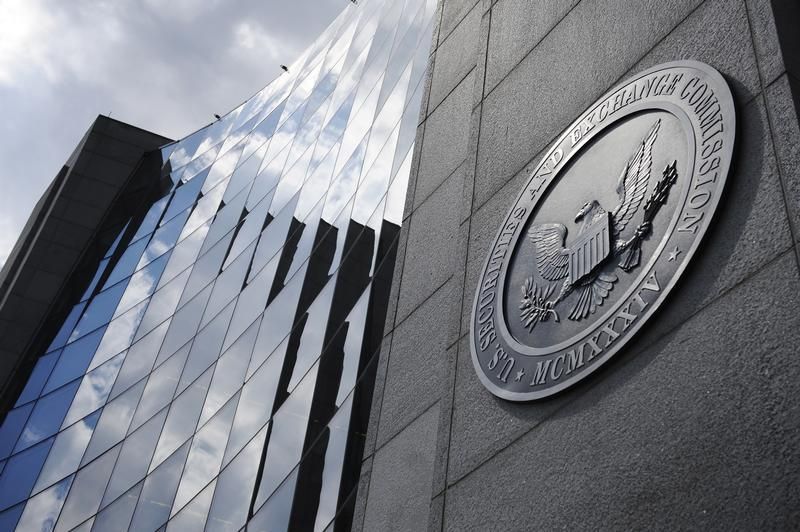
Plans to move US securities to a shorter settlement cycle are posing serious risks to overseas investors in these markets, forcing many to overhaul how they manage the currency trades used to pay for US equities and bonds.
Banks and fintech companies are already gearing up for an influx of activity from non-US firms ahead of May 28, when the settlement deadline will be slashed from two business days after a trade takes place to just one.
Halving the settlement timeframe will cause a major headache for many foreign investors, which hold about US$25trn in US stocks and bonds. It will materially reduce the leeway these firms have to complete the currency trades used to fund their purchase of US securities – and identify any issues with them – requiring many to make significant operational changes.
This shift to T+1 will have several implications for non-US investors, said Brijen Puri, head of JP Morgan's global FX services and "could encourage them to set up new execution desks in North America given the existing low market liquidity between time zones and the increased overall risk settlement failure".
The Securities and Exchange Commission said in February that the settlement cycle for US securities would move to T+1 next year to reduce the credit, market, and liquidity risks within transactions.
The broader FX market should not be too concerned about the shift, said Keith Tippell, chief product officer at CLS, which settles US$6.5trn in daily FX volume. But there is still about US$39bn in daily FX volumes - 0.6% of the total - from non-US firms that will be affected by the change, CLS estimates.
Non-US firms own roughly 20% of the US securities market, according to the Global Financial Markets Association. Most of these will secure the US dollars they need to make their purchases the day after the trade. The shift to T+1 will change that, forcing the exchange of currencies to occur the same day the investor buys stocks or bonds.

Timezone differences provide one obvious stumbling block in the new regime. The US stock market closes at 4pm Eastern Time, leaving investors a narrow window to match their equity positions and then execute the accompanying currency transaction. The overall effect of the rule change will see post-trade processing times reduce by 83%, according to analysis by the Association of Financial Markets in Europe.
"[It's] a real challenge for the market," said Vikas Srivastava, chief revenue officer at fintech Integral, which specialises in optimising FX trade execution.
The tighter timeline also means investors may miss their window to settle FX trades via CLS. Established in 1997 to reduce settlement risk within the market, CLS settles over 1 million currency transactions a day by netting positions on a multilateral basis. Instead, investors may have to settle their FX trades bilaterally. That increases the risk of settlement failure – a phenomenon that came to prominence half a century ago when several counterparties of Germany's Herstatt Bank didn't receive FX payments they were owed following the lender's sudden collapse.
Even if FX settlement failures don't trigger a crisis, they can still be costly for those involved. For trades unable to be settled within CLS – and so benefit from netting – investors will end up having to settle trades on a gross notional basis instead. This will mean investors need more funds to settle their FX trades. With US interest rates rising to about 5% over the past year – and expected to rise further – the average cost of settlement fails "will become a significant overhead", said James Pike, head of business development at Taskize, a fintech specialising in this area.
Settle down
The simplest way for overseas investors to skirt these problems is to establish a US-based trading desk that can handle their trades. Those unable or unwilling to do that can instead pay a custodian bank to transact the FX leg of their US securities trades on their behalf.
"We are currently working with our custody and prime broker services to develop a solution that would address both the operational challenges [and] the funding needs that the shift would create," said Alex Dewhurst, head of FX and emerging market sales at Societe Generale.
A revival in custody-arranged FX execution would mark a turnaround in fortunes for a business model that fell out of favour in the 2010s following several mispricing scandals. At one point, US$590bn of global institutional investor FX trades were at risk of being mispriced daily, according to analysis by asset management think-tank New City Initiative.
Fintech firms are also pitching services to help clients streamline FX execution, arguing they offer a better alternative to mitigating settlement risk.
"You could outsource your FX to a custodian, but that would involve a loss of control for buyside firms and would also increase costs as you'd have to pay someone else to trade FX for you," said Alex Knight, head of global sales and EMEA at post-trade firm Baton Systems, which uses distributed ledger technology to net and settle FX trades for investors who miss their window to do so in CLS.
More broadly, some expect the shift to T+1 to focus investor attention on trade fail and dispute resolution considering the narrower window to remediate any issues before settlement.
"The most important aspect for the buyside is not the trades that match, but the ones that don't match," said Lisa Danino-Lewis, chief growth officer at CLS, which offers services such as CLSNet to help investors bilaterally net FX trades, and CLSTradeMonitor to help resolve any settlement issues investors' FX trades might face in a timelier manner.
Corrected story: Updates 10th paragraph to correct the description of Herstatt Bank's failure. A previous version of this article inaccurately stated that Herstatt failed because of settlement risk. Instead, it was Herstatt's collapse that created settlement risk for its trading counterparties.